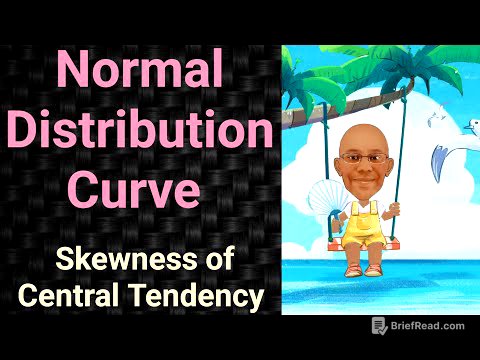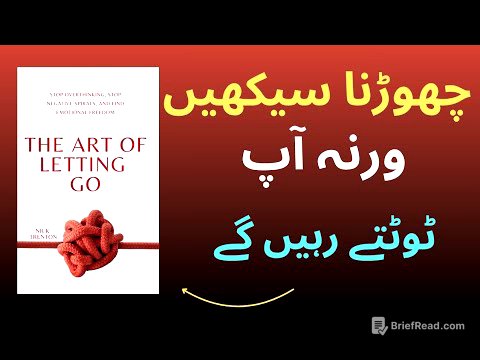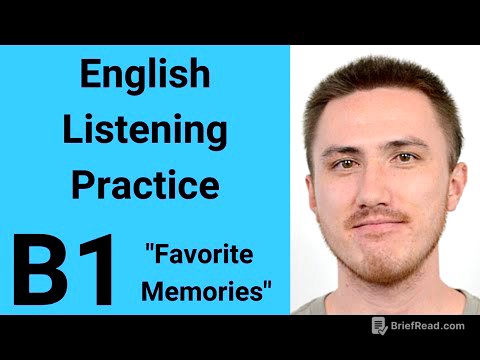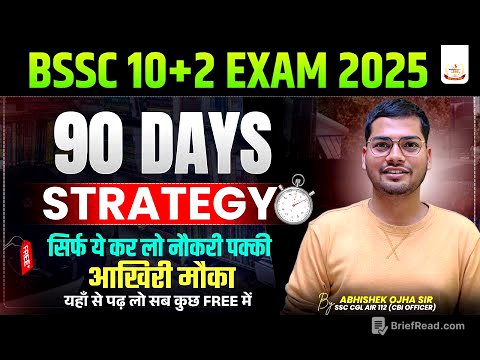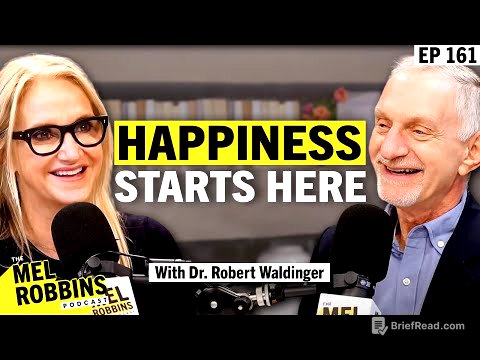TLDR;
This video explores the concept of inner power through neuroscience, emphasizing stillness, observation, breath control, and detachment from thoughts. It argues that true intelligence and resilience come from training the mind to be present and aware rather than reactive. The key takeaways include the importance of silence for mental clarity, the power of observation for understanding oneself and others, the role of breath in regulating emotions, and the freedom that comes from detaching from limiting thoughts.
- Stillness is essential for restructuring information and restoring energy.
- Observation cultivates heightened awareness and the ability to see beyond the surface.
- Breath control is a powerful tool for regulating the nervous system and emotional state.
- Detaching from thoughts allows one to regain control and make conscious choices.
Intro: The Science of Inner Power 🧠 [0:00]
The video begins by highlighting the importance of understanding how the mind works, particularly why some individuals remain clear-headed in chaos while others become easily disoriented. It asserts that to become sharper and more mentally clear, one must confront stillness, which the brain is not naturally designed for in today's world of constant stimulation. The key is to recognize that an overloaded mind is not a learning mind, and real progress comes from pausing and slowing down.
Breaking Autopilot: Consciousness vs. Conditioning [2:10]
The video emphasizes that stillness is not uselessness but a state where the brain restructures information and restores energy. In silence, the nervous system shifts into a parasympathetic state, activating brain regions responsible for deep awareness, sustainable learning, and emotional regulation. The ability to sit still and observe is a common trait among talented individuals, allowing them to step back, see clearly, and act deliberately. By becoming the observer of one's own mind, one can sense the difference between reflex and intention, leading to easier decisions and a life moved with consciousness.
The True Enemy of Intelligence: Distraction and Dopamine Loops [5:45]
The video explains that when you learn to sit in silence, old thoughts, emotions, and questions resurface to be seen, not to disturb. By being patient and not reacting, these thoughts lose their power, and you begin to control your mind. Silence opens the door to observation, a wordless awareness where you feel the energy of every thought, emotion, and vibration in the body. This amplifies sensitivity, allowing you to notice subtle cues and act with presence.
Neuroplasticity in Action: Train Focus Like a Muscle 💪 [9:20]
The video emphasizes that the winner in a confrontation is the one who observes and sees clearly before acting. An observant mind is quiet, perceptive, and calm, seeing more clearly than a reactive mind. Observation is a state of heightened awareness that creates space between stimulus and action, allowing for freedom of choice. This ability comes from training, activating brain areas responsible for emotional regulation, long-term decision-making, and social awareness.
Becoming Resilient Without Aggression: The New Edge [13:00]
The video highlights that truly intelligent people are awake enough not to react too soon, seeing what others overlook. By restraining reactions and choosing observation, you train your nervous system to become more stable, building an internal safe space. Observation is a dynamic form of awareness where you listen with your entire body and sense with full presence, making you someone who doesn't need to speak much to be heard or prove anything to be respected.
Cognitive Toughness: Resetting the Brain Under Stress [16:35]
The video explains that observation is an active life skill, a state of being more fully present and perceptive. An observant person sees the entire structure, not just the surface. This involves noticing subtle details like shifts in glance, hesitations in speech, and inconsistencies in movement. Observation is a state of dynamic stillness where you analyze, connect data, and sense unspoken signals, allowing the world to reveal itself truthfully.
Emotional Mastery: Respond, Don’t React [20:10]
The video emphasizes that inner observation involves paying attention to how you feel in certain situations and asking if the feeling is familiar. This opens the path to the root cause, allowing for real change. By recognizing repeating response loops, you can understand and heal, not to blame yourself, but to gain clarity. An observing mind simply needs to see clearly what is happening inside, stepping out of unconsciousness and tracking the process.
Prefrontal Activation and Stillness: Calm Under Pressure [24:20]
The video asserts that breathing is the link between body and mind, and the way you breathe is the way you live. Deep, slow, and intentional breathing stabilizes the body, emotions, and thoughts, signaling safety to the nervous system. By controlling your breath, you influence your nervous system, endocrine system, and emotional state, reestablishing the connection between emotion, thought, and behavior. Breath is your internal stabilizer, preventing you from being swept away by the storm.
The Inner Upgrade: Discipline = Freedom [28:05]
The video explains that you cannot activate both the stress response and the deep relaxation response at the same time; breath is the key to switching between them. Intentional breathing should be a natural part of life, not just a reaction to stress. This retrains the nervous system, re-calibrates brain responses, and creates a space where everything can pass through without destabilizing you. Make breath work a part of your daily routine to maintain a stable biological rhythm.
Rituals of Daily Mental Clarity [32:30]
The video highlights that not every thought in your head is true; some are echoes of past criticism or inherited fears. True power begins when you recognize the difference between thought and truth and choose what is worthy of space in your awareness. Detaching from thoughts doesn't mean preventing them, but stopping identifying with them. Observe thoughts like clouds drifting by, creating space between yourself and the mind.
Neuroscience Meets Purpose: Aligning Vision with Action [36:00]
The video emphasizes that intellectual freedom comes from knowing that you are not your mind but the one who sees the mind working. Lead your inner stream of thought, staying steady even when your inner world is stormy. Freedom begins from within, and a person can be free even amid noise and chaos if they are still inside. True presence begins when you no longer need to be accepted or triggered by rejection.
Final Words: Apply the System, Live the Standard 🔁 [39:15]
The video concludes by stating that inner freedom allows you to see without being drawn in, feel without reacting, and notice without rushing to adjust. This makes you nearly untouchable because you no longer have weak spots. Steadiness comes from silent inner training where you observe every reaction, dismantle conditioning, and rebuild your foundation. With inner freedom, you don't need to claim attention or overpower anyone because your presence attracts it and you are not in competition.


